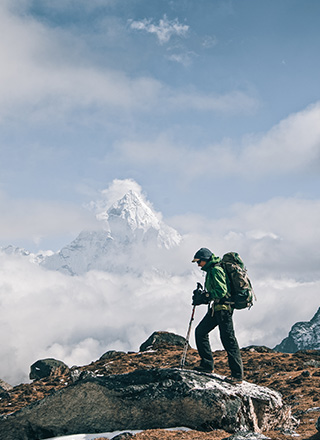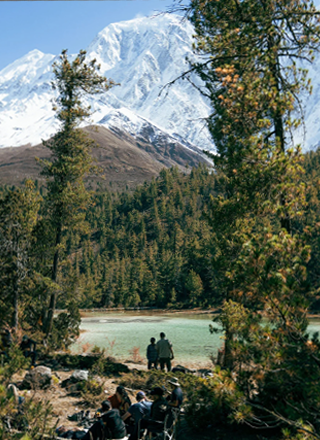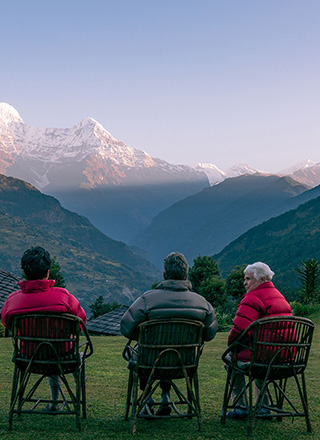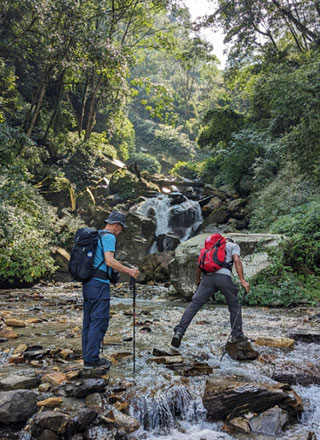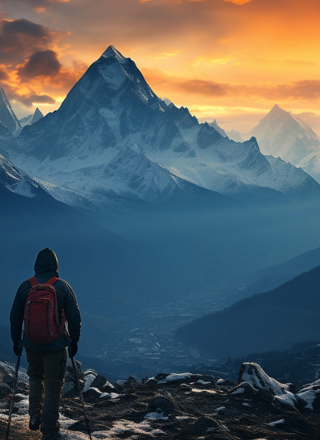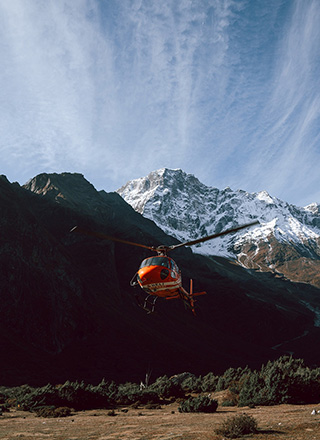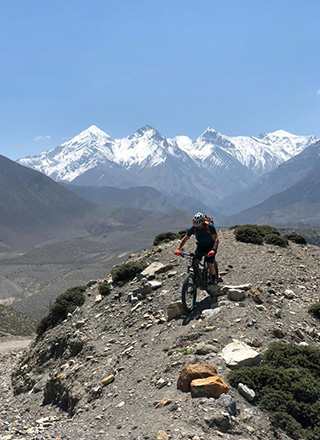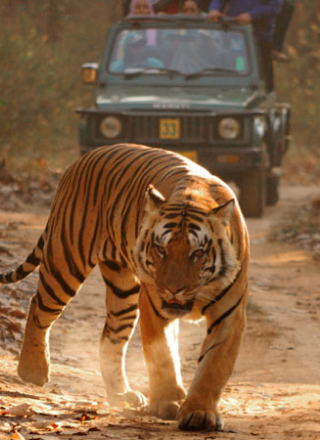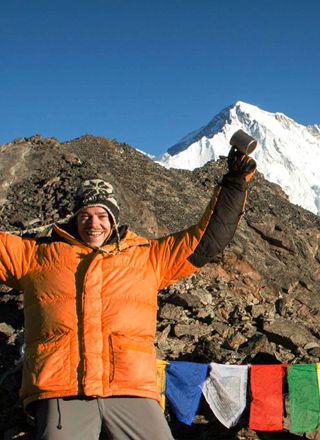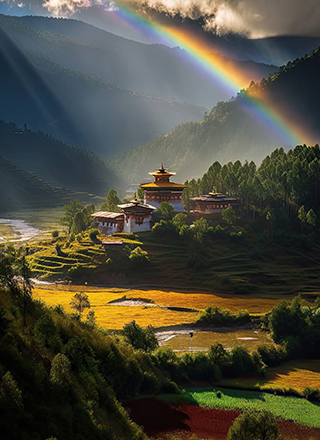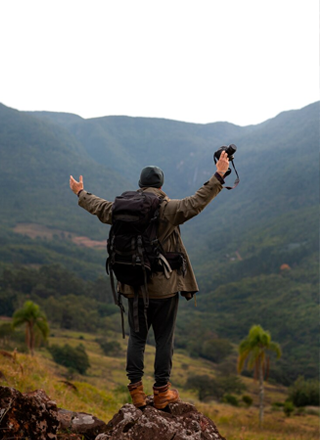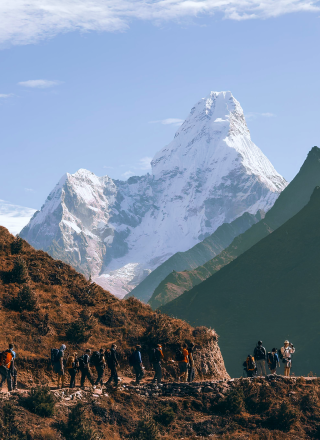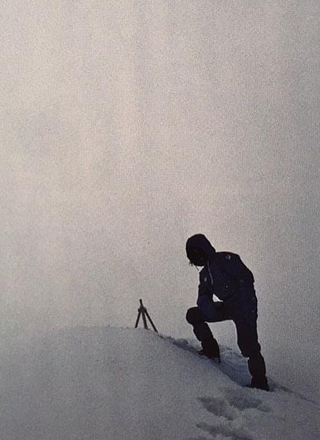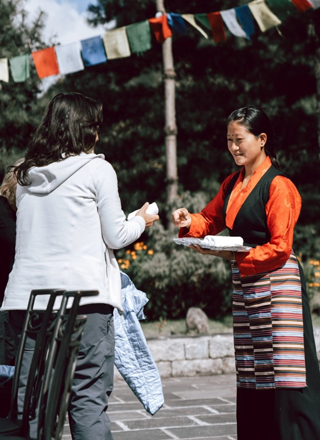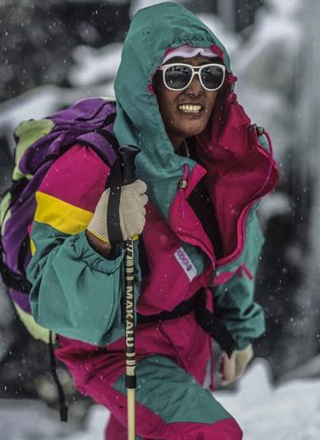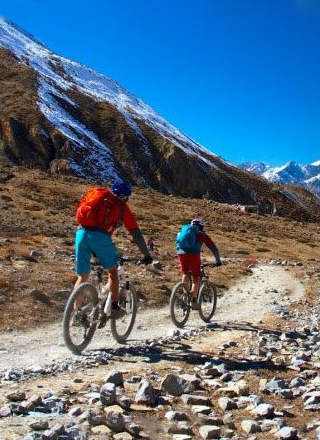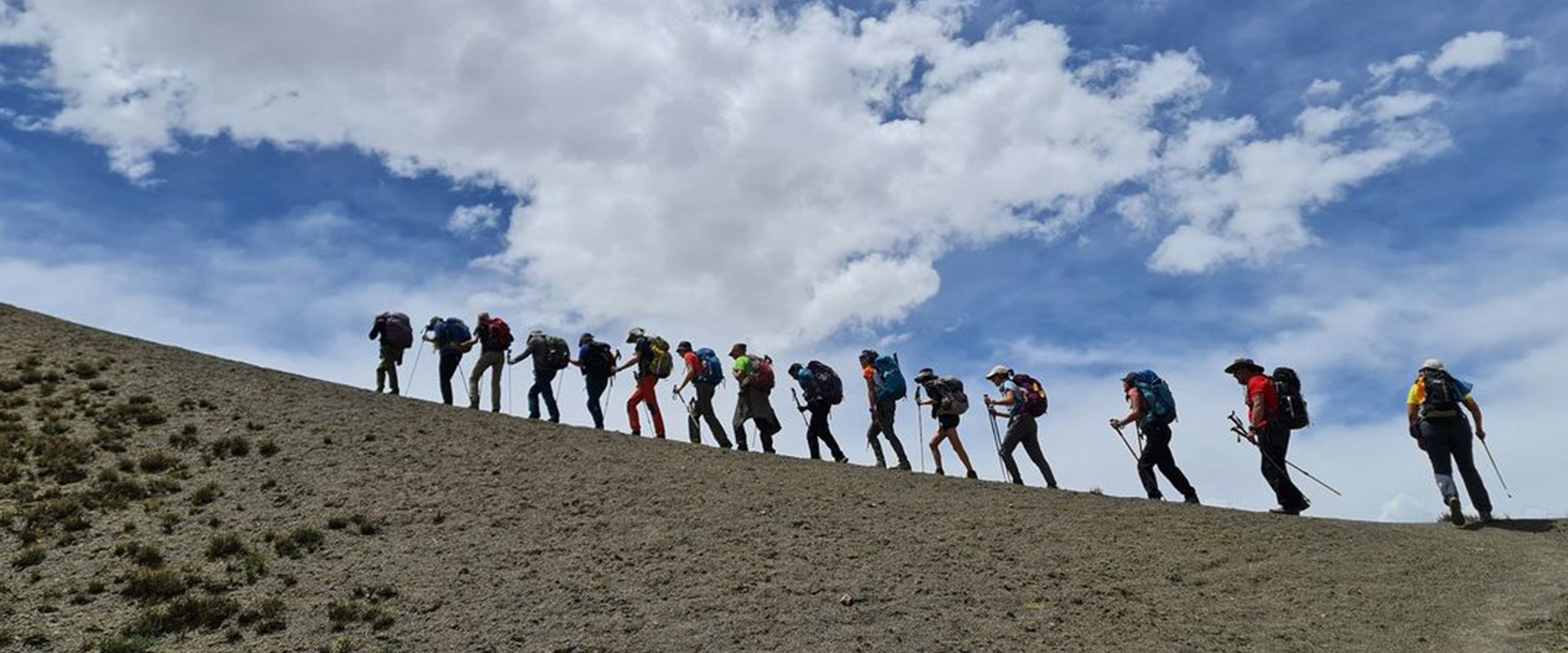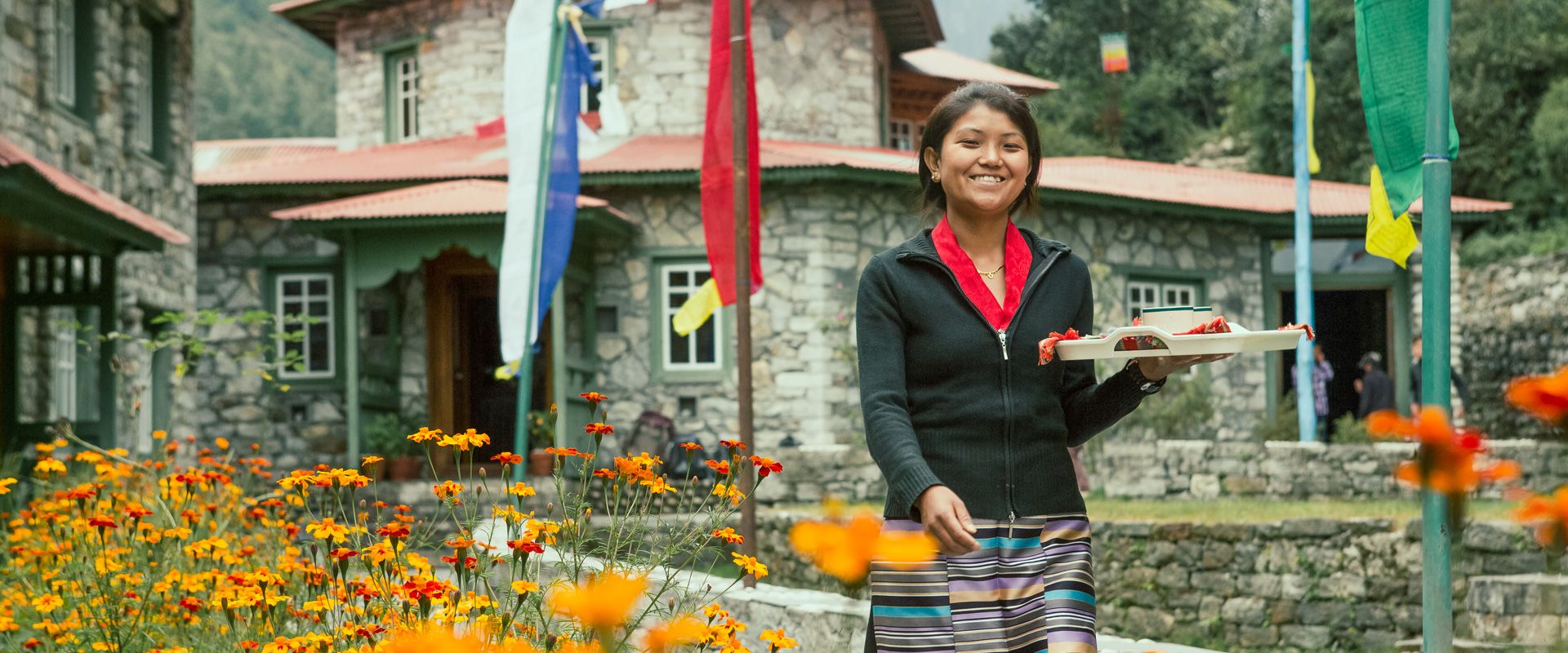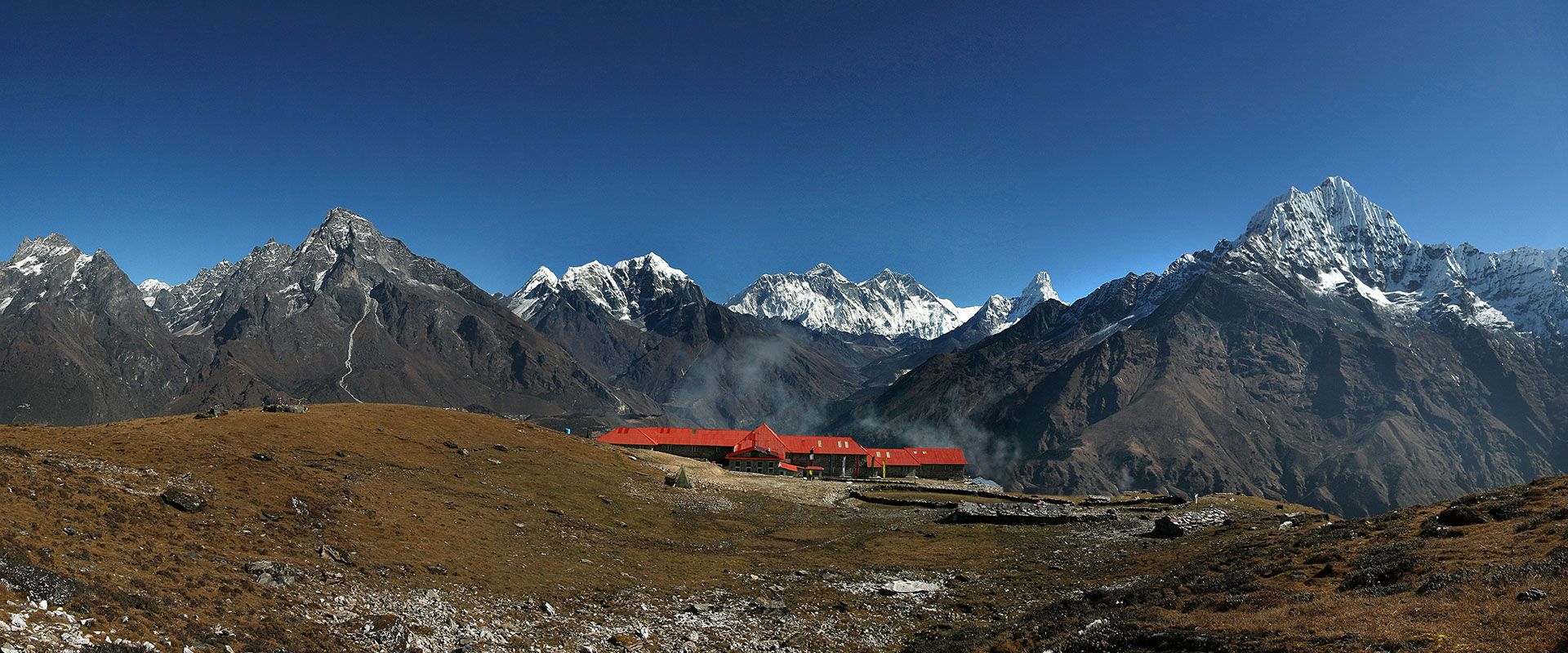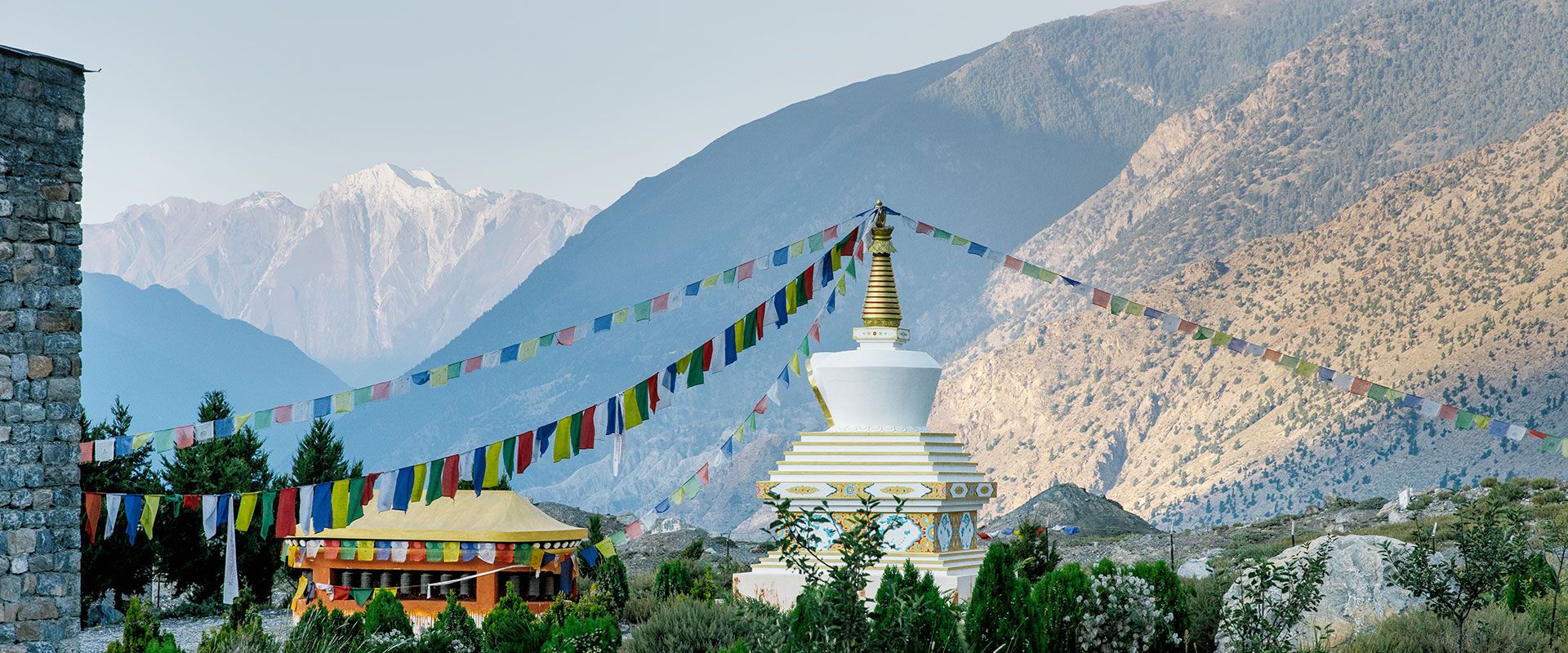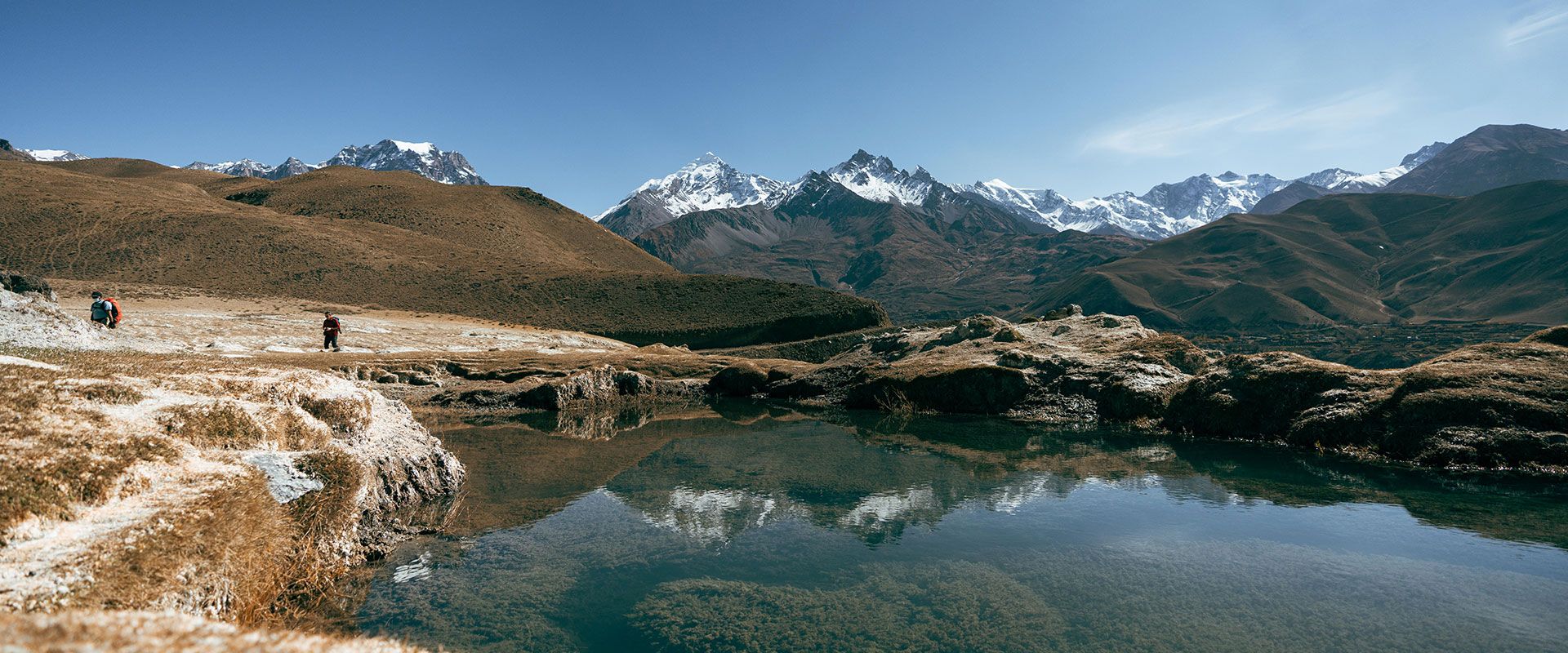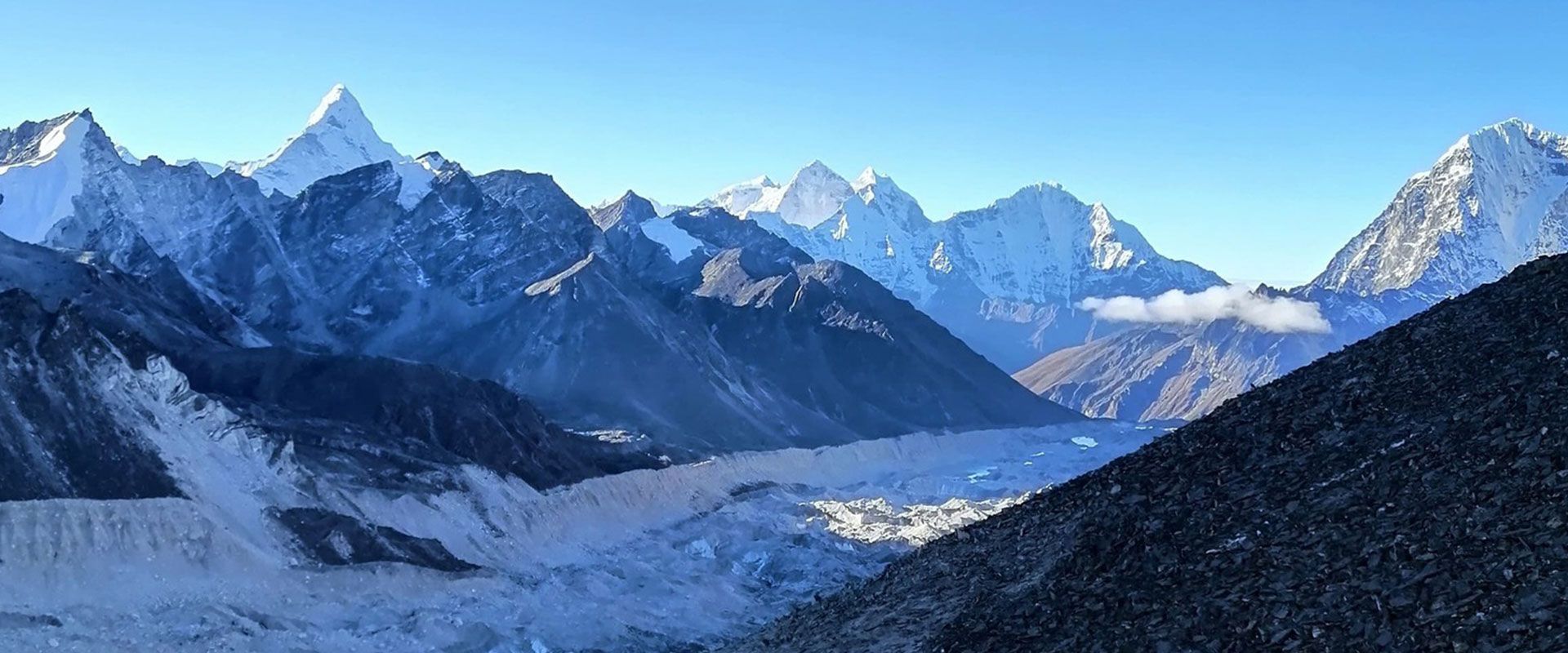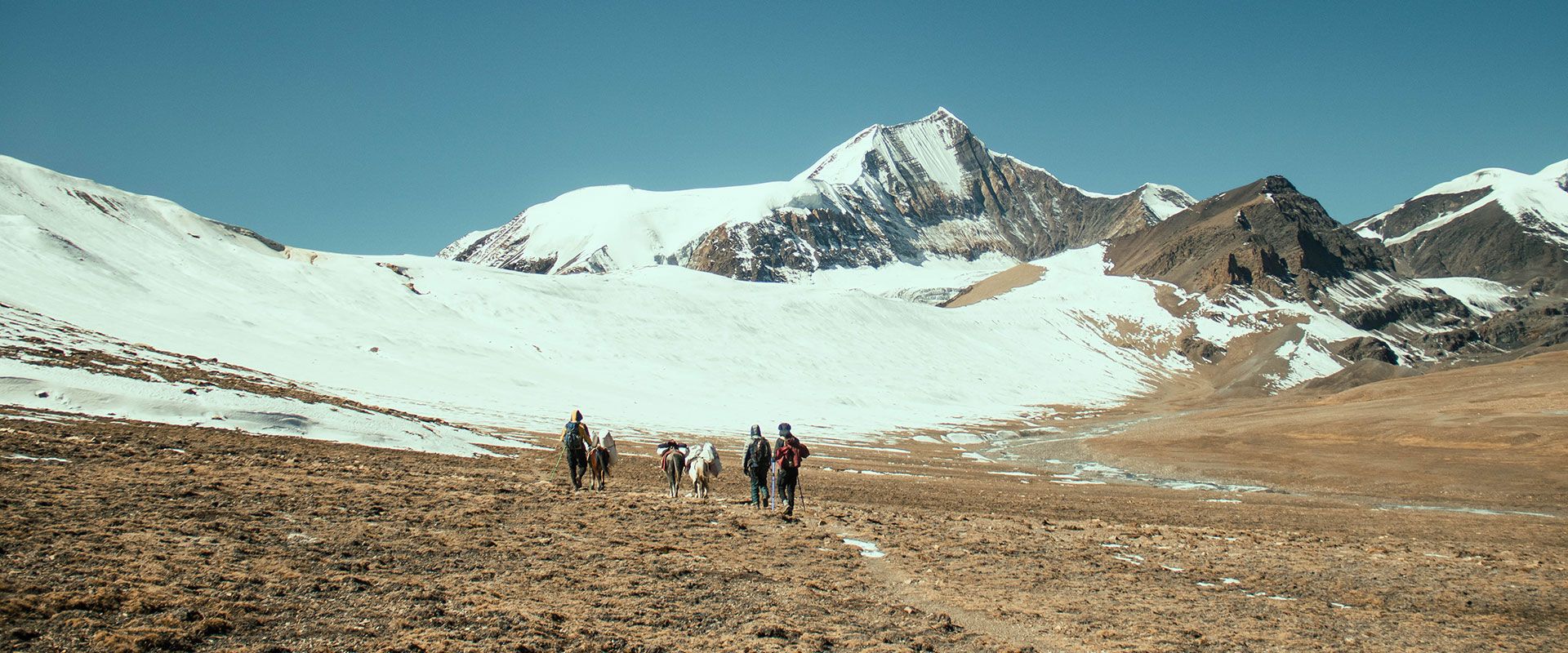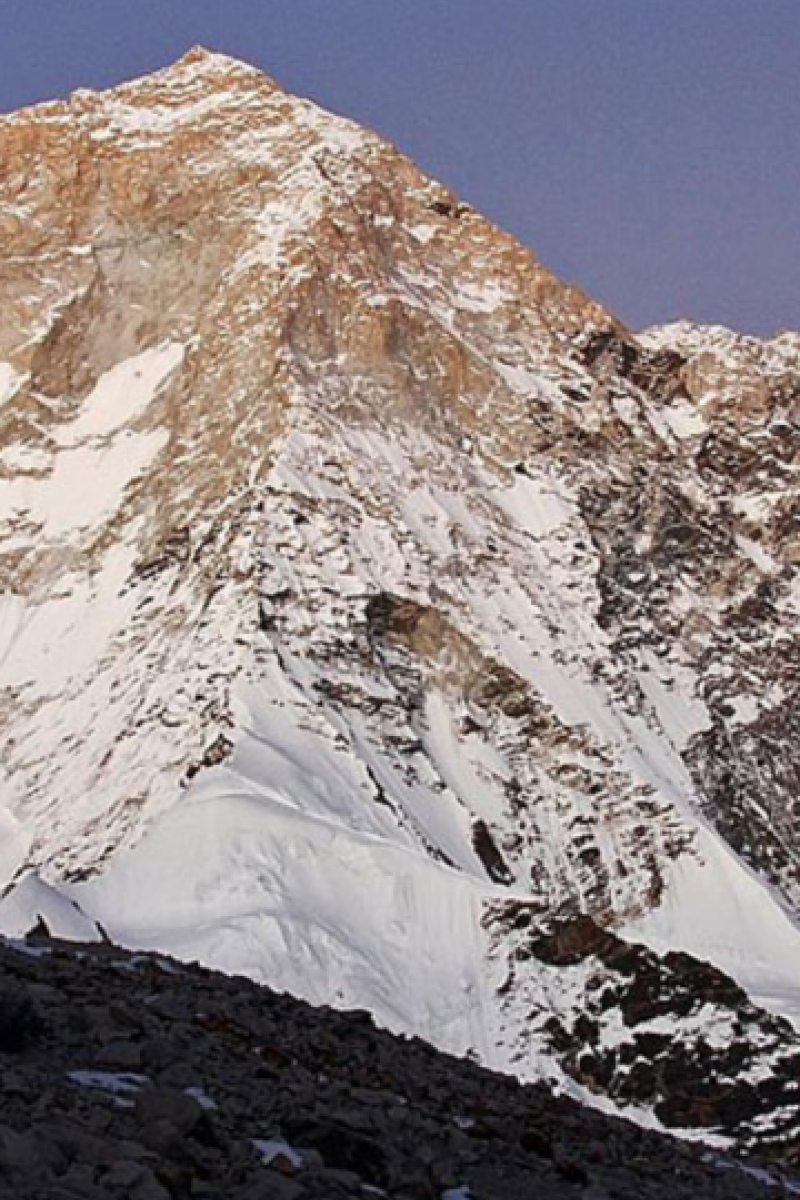- Travel Styles
- Destinations
- Signature & Charity Treks
- Special Project
- About Us
- Contact Us
19 days
18 Nights
Round Annapurna Trek

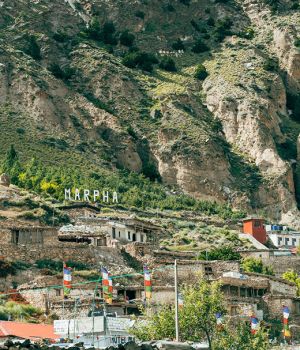
OVERVIEW
Ethnic villages, Throng Pass, stunning Himalayan views
This magnificent trek leads you to the fine villages inhabited by a wide diversity of people from different ethnic groups – Gurung, Manangi, and Thakali people. It also offers spectacular views of the white Himalayas with equally breathtaking sceneries.
The high point of the trek entails crossing the 5,416m high Throng Pass, from the arid valley of the upper Manang, down to the Hindu pilgrimage site of Muktinath, and the Kali Gandaki valley.
Trip Overview
Destination
Region:
Activity:
Max. Altitude:
Type:
Group size:
Difficulty:
Highlights
- Stunning mountains view from Poonhill station (3150m)
- Explore beautiful Manang Village
- Visit Muktinath temple – a sacred pilgrim site for both Hindu and Buddhist
ITINERARY
TAILORED TRIP FOR YOU
Arrival in Kathmandu.
Depending upon your arrival time, our representative will be at the airport to receive you and transfer you to your booked hotel.
Meals: B
Drive to Kathmandu – Besisahar – Jagat. – 9/10 hrs drive
We will pick you up from your hotel for the drive to Besi Sahar. Our journey begins through deep gorges as you trace the Trisuli River westwards. We will be passing through the small town of Mugling where the Trisuli and Marshyangdi rivers meet. Approximately 7 to 8 hours of a drive we reach foothills around Besi Sahar (760m). Through the villages of Ngadi and Lampata the trail leads to Bahundanda and continuing high above the river eventually western side of the Marsyangdi at Syange after which the trail becomes steep in parts, reaching the ancient village of Jagat.
Meals: BLD
Trek to Dharapani (1860m) – 7/8 hrs trek
The initial route of trek begins from Jagat where the trail continues with a zigzag way across the right side of Marsyangdi river view and after crossing again suspension bridge in the Marsyangdi River the trail goes uphill and gradually steep flat and get to Tal. It is one of the famous places for valley views and waterfalls. We enter Manang district after crossing the bridge near Tal. The trail advances through barely, rice and potato fields; and the waterfalls continue to accompany us even today. Afterward, we pass through the village of Kodo before reaching Dharapani which is one of the biggest villages in the Manang Valley.
Meals: BLD
Trek to Chame (2670m) – 5/6 hrs Trek
After registering in ACAP office, we advance our climbs over a spur, steep forested ridges along with several landslides on route to Chame. Throughout the day one can enjoy spectacular views of Annapurna II (7937m). The trail stays on the south bank of the river, climbing through forests to Danaque, a valley surrounded by apple orchards. Climbing steeply zigzag section of the road through Rhododendron forest, the trail climbs along the fir forest which follows the river for a time amongst the maple and oak trees. Finally at the entrance to Chame, is along with many prayer wheels; the administrative headquarter of Manang district.
Meals: BLD
Trek to Pisang (3200m)
Departing Chame, we cross the northern side of the river and follow a relatively easy trail up through apple orchards to the village of Baratang. We then start advance trail through a steep and narrow valley to have our first view of Paungda Danda rock face, a dramatic curved rock face rising from the river that provides us beautiful scenery of the journey so far. Then, we move towards the Manang Valley floor enjoying the captivating landscape.
Meals: BLD
Trek to Manang via Ngawal (3540m) – 4 hrs trek
Continuing on the south side of the river, the trail includes a long climb over a ridge which passes through Upper Pisang via Ngawal as it guarantees outstanding views of Mt. Annapurna, Pisang Peak. On the way, we pass through pine forests, villages such as Braga and farming terraces. As we walk near Manang, the climate becomes more cold and dry.
Meals: BLD
Rest day in Manang
We rest at Manang today after the long treks in the past few days accompanied by fine day walks over viewing the panoramic views of the villages.
Meals: BLD
Trek to Ledar (4250m) – 5/6 hrs trek
We continue our trail that ascents towards the Thorong La pass as we climb steadily through Tenki and leaving Marshyangdi Valley. As we continue along the Jarsang Khola Valley. we arrive at Ledar that lies at the elevation of 4250m.
Meals: BLD
Trek to Phedi or High Camp (4600m)
The first small settlement we reach after a steady walk upwards is Letdar. It is an uphill walk towards Thorong Phedi. We now ascend further and pass through towering cliffs before reaching Thorong Phedi. On the way, we go through the outstanding views of Mt. Ghundang, Mt. Syagang.
Meals: BLD
Trek to Muktinath via Thorong Pass
The trail becomes steep as soon as we leave Thorong Phedi. Following rocky ridges, as it ascends to the Thorong La pass, the Great Barrier Ridge appears. We can take a few photos before heading to Muktinath Valley at the foot of the Thorong La pass. The site one can see upon reaching the pass is of traditional chorten, prayer flags, and cairn, and the panorama of Himalayan giants along with the first view of the immense Kali Gandaki valley to the west.
Meals: BLD
Trek to Marpha (2700m) – 7/8 hrs trek
Today’s trek begins with the downhill walk to Kali Gandaki Gorge having arid landscapes opening on the Tibetan plateau to the north, high mountains covered with snow to the south (Nilgiri and Dhaulagiri Himal). Passing down to Jomsom, we cross Jarkhot and Kagbeni which are also worth visiting. Further descending down we reach Marpha, a delightful Thakali village. Its narrow alleys and passageways provide welcome shelter from the strong winds of the Kali Gandaki Gorge. Marpha is well known for its apples, apple cider, apricot and peach wine.
Meals: BLD
Trek to Kalopani (2500m) – 7 hrs trek
After breakfast, we head out to Kalopani, crossing the river and walking through Tibetan Refugee camp at Chairoto Tukuche. From Tukuche, the trail is undulating and passing through small villages of Sauru, Kobang and Larjungon the way, making our way down to Kalopani.
Meals: BLD
Trek to Tatopani (1200m) – 7 hrs trek
From Kalo Pani, we follow the standard trail until we reach Ghasa. From Ghasa the trail descends steeply up to RupseChhahara (Waterfall). From Rupse, the trail ascends slightly to Tatopani. The word “Tatopani” is also known as the natural hot spring situated at the bank of the Kali Gandaki River. Take a dip into the hot spring to relax your sore muscles after long walks.
Meals: BLD
Trek to Ghorepani (2850m) – 7 hrs trek
Today we climb steadily through thick forest until we reach Shikha. From this vantage point we have stunning views down through the Kali Gandaki Valley and across to the Dhaulagiri range. Continuing through rhododendron forest we make our way to Ghorepani.
Meals: BLD
Morning visit Poonhill (3150m) then trek to Tikhedhunga (1350m) – 7 hrs trek
Early morning take a short hike to Poon Hill (3210m) to enjoy the panoramic sunrise views over the peaks of Annapurna 1, Annapurna South Machhapuchhre and Dhaulagiri amongst others. Afterward, we return to Ghorepani for a breakfast before descending to Tikhedhunga.
Meals: BLD
Trek to Hille and drive to Pokhara (900m) – 4/5 hrs trek
Today we will trek down to Hille which takes approx. 2 hrs walk. Our vehicle will be waiting for you and will transfer you to hotel.
Pokhara is Nepal’s second largest town and is far more relaxed than Kathmandu. It’s beautiful lakeside setting beneath the imposing shadow of the stunning Annapurna Range, make it the perfect ending point for our trek.
Remaining day at leisure
Meals: B
Fly back to Kathmandu
Today morning, you are transferred to Pokhara airport for your flight back to Kathmandu. Upon arrival in Kathmandu, you are transferred to Hotel.
Meals: B
In Kathmandu
Breakfast at the hotel.
Head out to the sightseeing tour of Bhaktapur City and Patan City.
Meals: B
Final departure
Depending on your flight time you will be transferred to the airport. The airport checks in is 3 hours prior to the departure time and the hotel checkout time is 12 PM. In case our flight is late evening please let us know if you require half day use of the hotel.
Our representative will meet you at the hotel and transfer you to the airport.
Meals: B
Included
- 3 nights in Kathmandu Hotel as per program on Bed & Breakfast basis
- 15 nights in local Lodge as per program on full board basis
- Transportation from Kathmandu to Besisahar in private vehicle.
- Transportation from Besisahar to Jagat in private jeep.
- Transportation to Besisahar in private jeep and to Kathmandu in private vehicle.
- National Park Fees & TIMS Permit Fee
- 1 English Speaking Guide (from Kathmandu)
- 1 porter for every 2 members
- All staffs insurance & daily wages
- All Airport transfers
Not Included
- Lunch & Dinner in Kathmandu
- Personal Equipment & Insurance
- Personal Expenses (Battery recharge on local lodge, laundry, telephone, etc)
- Nepal Visa fee US$ 40 per person
- Emergency Evacuation if required
- Other personal Expenses
- Tips for Staffs
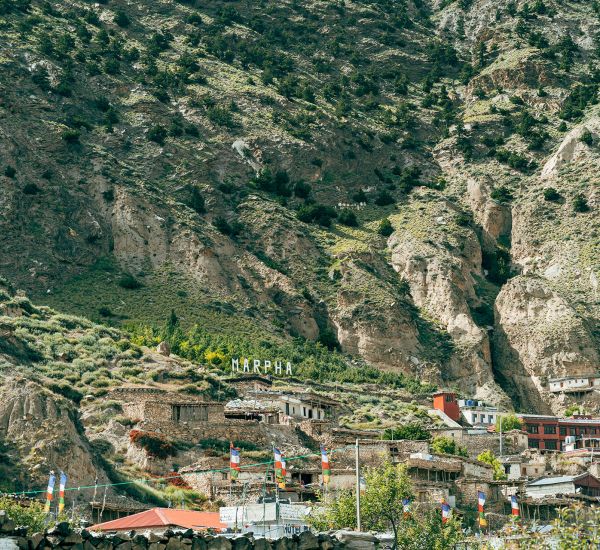
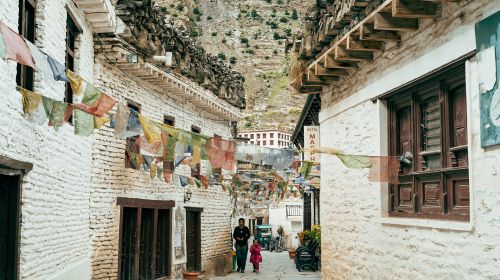
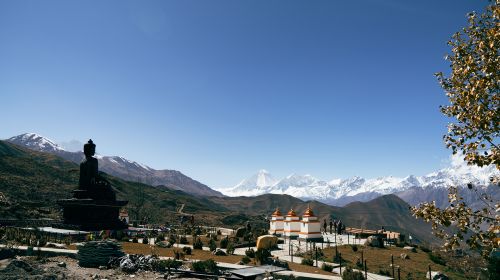
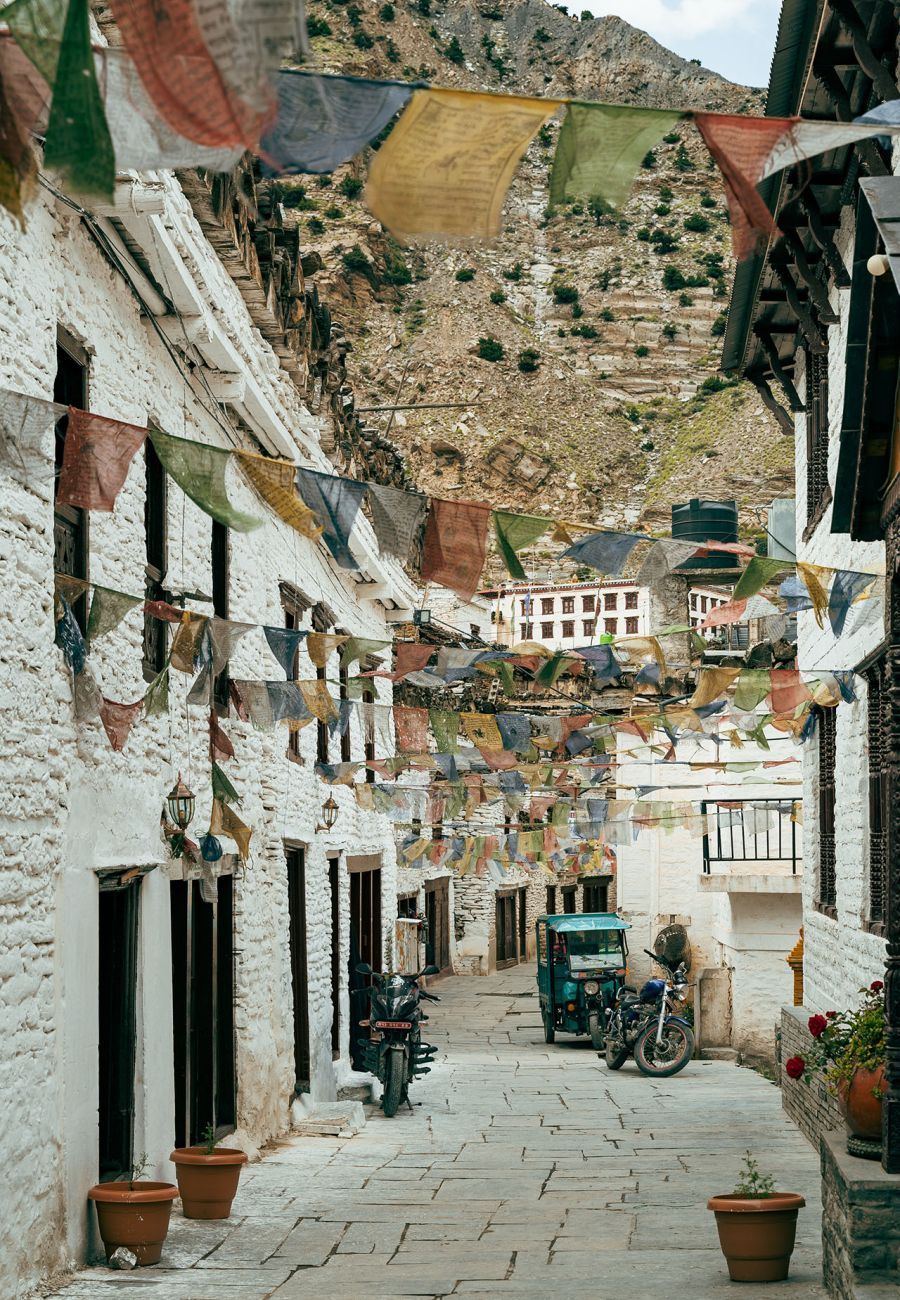
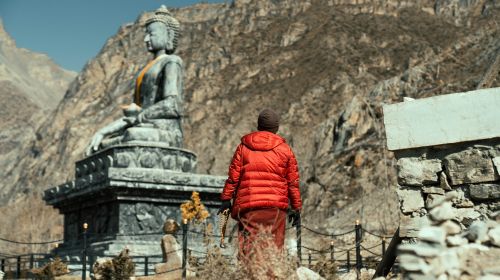
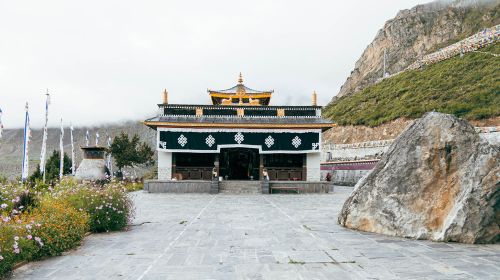
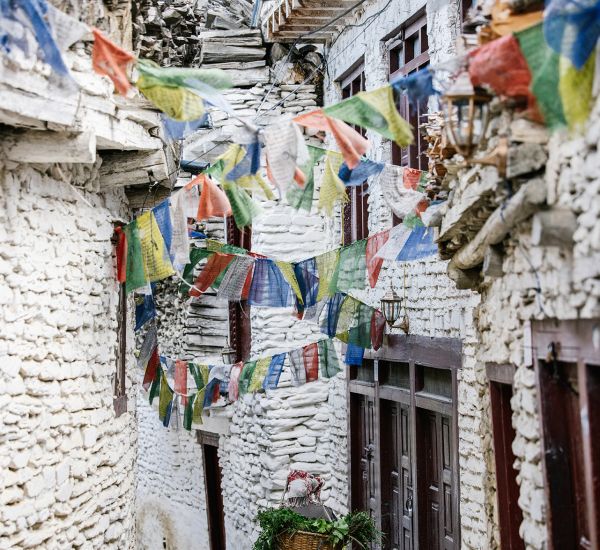
ACCOMMODATIONS
WHERE YOU WILL STAY
This tour spends three nights in a hotel in Kathmandu and fifteen nights on the trek in lodges (tea houses).
In Kathmandu we normally use a 3-star hotel located within walking distance of the Thamel.
On the trek we will stay in tea houses for the most part. The tea houses are basic but adequate; please be realistic about what to expect in the mountains.
FAQs
ESSENTIAL INFO
adventure that speaks to your heart.
Most nationalities require a visa for Nepal, which can be obtained in advance or on entry. If you wish to apply before departure the current visa cost is £20 for a 15 day visa and £35 for a 30 day visa for UK passport holders. The current cost of a visa on arrival is US $25 for 15 days, US $40 for 30 days or if extending your stay $100 for 90 days. All are multiple entry. The visa on arrival fee can be paid for in cash in US Dollars, Pounds Sterling or Euros. You will also need a passport photo. Application forms are available in the immigration hall (or for electronic passports there are visa registration machines which, after inserting your passport, automatically fill out a form for you). You must firstly join the queue to pay the visa fee, and then go to the relevant immigration desk to obtain your 15, 30 or 90 day visa stamp. There can be long queues for visas on arrival.
Non UK nationals should check requirements with their nearest embassy (a few nationalities are not permitted visas on arrival).
There are no mandatory vaccination requirements. Recommended vaccinations are: Polio, Tetanus, Diphtheria, Typhoid, Hepatitis A. The risk of malaria is present in certain regions only (such as Chitwan); you may wish to consult your GP or travel health clinic for further advice. Dengue fever is a known risk in places visited. It is a tropical viral disease spread by daytime biting mosquitoes. There is currently no vaccine or prophylaxis available for Dengue, and therefore the best form of prevention is to avoid being bitten. We recommend you take the usual precautions to avoid mosquito bites. Most of our trips to Nepal go to high altitudes where there is a risk of being affected by Acute Mountain Sickness. Our itineraries are designed to enable everyone to acclimatise to these altitudes, but you should be aware that it is still possible for you to be affected. Please refer to the TRIP NOTES for complete advice on AMS.
Breakfast is included throughout the trip and all meals are provided while camping (all breakfasts, 3 lunches and 2 dinners).
Breakfast is included throughout the trip and all meals are provided while camping. On trek the breakfast will be a set menu usually consisting of porridge and toast. Any additional items that are not included in the set menu should be ordered and paid for separately. We do not include lunch and dinner in the tea-houses, allowing you to choose what you want to eat and when. Although most lodges have almost identical menus, they are reasonably extensive and offer a varied selection, ranging from traditional Nepalese dal bhat to pizza and apple pie.
Although meat is available in the tea houses, we advise against eating it on trek. The meat has often been carried in the heat from lower altitudes for several days before reaching the lodges, and can cause stomach upsets or illness. Germs can also be spread by handling dirty money – we recommend using hand sanitiser.
If you buy imported food and drink whilst on trek you will spend more than the suggested amount.
Drinking Water
Staying hydrated is important when undertaking any physical activity but particularly so at altitude where it is generally recommended to drink at least 3-4 litres per person per day.
We strongly encourage you not to buy bottled water on trek as this contributes to the growing problem of plastic pollution in Nepal’s trekking areas.
All tea houses will provide cold water free of charge, if requested. Although this should not be drunk untreated, we recommend that you bring a reusable bottle with a wide opening (Nalgene or similar) with you and use a SteriPEN to treat it with. A SteriPEN is a handheld UV water purifier – small, lightweight and battery powered so easy to pack for a trek. In Nepal’s trekking regions most of the bottled water isn’t strictly ‘mineral water’ anyway but is UV treated, so it’s exactly the same technology. It’s quick to use, far more effective than purification tablets, and the water is ready immediately. It’s fine to use a SteriPEN on non-boiled water so long as it isn’t cloudy or full of sediment (which is uncommon in these regions).
SteriPENs are widely stocked on Amazon, outdoor shops and other online retailers; look for the latest models but avoid USB charging ones. Better still, a SteriPEN will pay for itself over the course of the trek and you won’t leave behind a single plastic bottle – you will end up spending the same or even less than you would on bottled water, plus you can keep it for future trips.
If you prefer not to invest in a SteriPEN, the tea houses also sell boiled water for approx. Rs150-300 per litre (the price increases the higher you trek) which should not require treating. This is also perfect for a bedtime refill as it can double up as a hot water bottle.
While camping boiled water is supplied for drinking.
The main trekking season in Nepal is from October to mid-May when daytime temperatures at most altitudes are generally comfortable for walking, the sky is clear much of the time and rain and snow are occasional occurrences. Daytime temperatures will vary from 15ºC to 35ºC in the Kathmandu Valley to around 10ºC at 3,600m and progressively lower the higher we go.
Different seasons offer different advantages for trekking.
Post Monsoon/autumn: Mid-September to November. This is the main trekking season in Nepal. Day temperatures in Kathmandu are approximately above 20ºC. Skies are usually clear and days on trek are sunny and mild with clear mountain views. At the highest altitudes although the days can be nice and sunny the temperatures can drop to 10ºC and much lower. Nights will be colder with temperatures dropping as low as minus 10ºC and lower at the highest altitudes.
Pre-monsoon/spring: March to May. Both day and night temperatures will be warmer in general but haze will often build up in the afternoons. It is very hot in the lowlands and temperatures rise to 35ºC in Kathmandu. Flowers bloom in this season and this is one of the reasons people chose to trek in spring.
Snow can be expected on any departure, usually at the higher altitudes. Summit day will be a very early start (usually about 2am) and will be extremely cold. Although mostly it is calm and clear on summit day the mountain does occasionally get high winds. You need to be equipped for temperatures as low as minus 25ºC plus wind chill on summit day.
Please remember that in any mountain area the weather is never wholly predictable and you should be prepared and equipped to deal with any differences in weather beyond the conditions described above.
This is a Tough+ trek. It is activity level 9 with 16 days walking and full porterage throughout. The maximum altitude is 6,189m (or 5,545m without Island Peak) and the average is 3,680m. There are some steep ascents and descents and some narrow trails. As this trek also ascends to very high altitudes participants should be confident of their physical fitness and must have previous experience of trekking at altitude and in snow.
Although it is not compulsory to participate in the climb (the summit attempt is optional), anyone who does must have previous ice axe and crampon experience and know how to use a jumar and abseil device. There will be equipment checks and practice sessions for rope use, ice axe, crampon and harness use, abseiling and crevasse rescue. For safety reasons it is compulsory to participate in these sessions. If you do not take part the leader and climbing Sherpas will not allow you to take part in the climb.
Though technically harder than Mera Peak, for those with the necessary experience this expedition is within the reach of those seeking their first Himalayan summit. The climb requires strong lungs and a great deal of will power – it is graded alpine PD+ and starts with some rocky scrambling to a glacier. We cross the glacier roped up (there is one ladder to cross), and then come to a 200m steep 40-45 degree headwall, which leads to a 20m summit ridge. We will rope up to cross the glacier and you will be walking with an ice axe, crampons and plastic boots. There are fixed ropes up the headwall (approximately 200m) and along the summit ridge. On the ascent you will need to use a jumar and on the descent you will need to use an abseil device.
Please be aware that altitude can have a significant affect on your physical state. It is important that you take heed of the leader’s advice and decisions at all times. The leaders are trained in first aid and are well aware of AMS symptoms and will keep a close eye on the group. We ask you to refer to the altitude warning within the Trip Notes.
The climb itself is not recommended for anyone with a fear of heights or vertigo and the main trail itself crosses three modern suspension bridges over rivers and valleys – all of these have mesh sides but some are quite long and high.
ESSENTIALS
EQUIPMENT CHECKLIST
Ensure you have all the essentials to make your trip
safe and enjoyable.
Body Wear
- Gore Tex Jacket
- Gore Tex Pant
- Hiking pant
- Fleece trouser and jacket or warm jumper – Recommended not thick but warm enough that fits inside the Gore Tex pant
- Anti-sweat T-shirtEarmuffs/Ear warmers (optional)
- Thermal inner trouser
- Down jacket with hoodie
- Thermal inner trouser
- Down jacket with hoodie
Head Wear
- Sun Hat/Normal cap
- Fleece or woolen hat
- Earmuffs/Ear warmers (optional)
- Sunglasses with UV protection
- Buff Scarf / thin face mask
Hand wear
- Fleece or woolen thin gloves
- Expedition shell gloves
- Gore Tex mitten gloves
Other Equipments
- Sleeping bag (comfort rated – 15ºC)
- 30 Litre Rucksack with cover
- Large size Duffel Bag with padlock
- Headlamp with spare batteries
- Water bottles 1 Litre X 2
- Thermos
- Basic First Aid Kit including: antiseptic cream, throat lozenges, diarrhea treatment (Imodium), altitude (Diamox), painkillers, plasters and blister treatment, insect repellent, and re-hydration salts (Dioralite). Glucose tablets and multi-vitamin tablets are also a good idea.
Washing kit & Toiletries
- Waterproof washing kit bag
- Towel – medium size
- Washing soap, towel, tooth pest, tooth brush etc.
- Sun Lotion Enough +30SPF (including total bloc for lips, nose etc.)
- Hand wash & sanitizer
- Toilet paper (you can buy this in the lodges)
- Wet tissue
Foot Wear
- Trekking boots
- Hollow Out Outdoor Slipper
- Trekking socks (4-5 pair)
- Snow Gaiter
Optional Items
- Trekking poles
- Trainers or similar for use in the lodges
- Shorts
- Base layer leggings
- Gaiter
- Sleeping bag liner
- Pillowcase
- Ear plugs (particularly if you are not the one snoring)
- Travel clothes
- Camera
- Pen-knife (remember to pack sharp objects in hold baggage)
- Repair kit – (egg. needle, thread, duct tape)
“Six out of Six”
Yeti Mountain Home Thame was the third of six Yeti Mountain Homes we stayed in. Loved the ambiance. Loved the village. A huge bedroom. Once again – brilliant food and warm welcoming staff. The decor was stunning and the house arrangement interesting.
LOIS OMAN

“Six out of Six”
Yeti Mountain Home Thame was the third of six Yeti Mountain Homes we stayed in. Loved the ambiance. Loved the village. A huge bedroom. Once again – brilliant food and warm welcoming staff. The decor was stunning and the house arrangement interesting.
LOIS OMAN

“Six out of Six”
Yeti Mountain Home Thame was the third of six Yeti Mountain Homes we stayed in. Loved the ambiance. Loved the village. A huge bedroom. Once again – brilliant food and warm welcoming staff. The decor was stunning and the house arrangement interesting.
LOIS OMAN

FEATURED JOURNEYS
ALSO SEE THESE TRIPS
We have handpicked some of our favourite iconic Nepal trips we think you will love.
ENQUIRY
CONTACT OUR TRAVEL EXPERTS
within 24 hours.
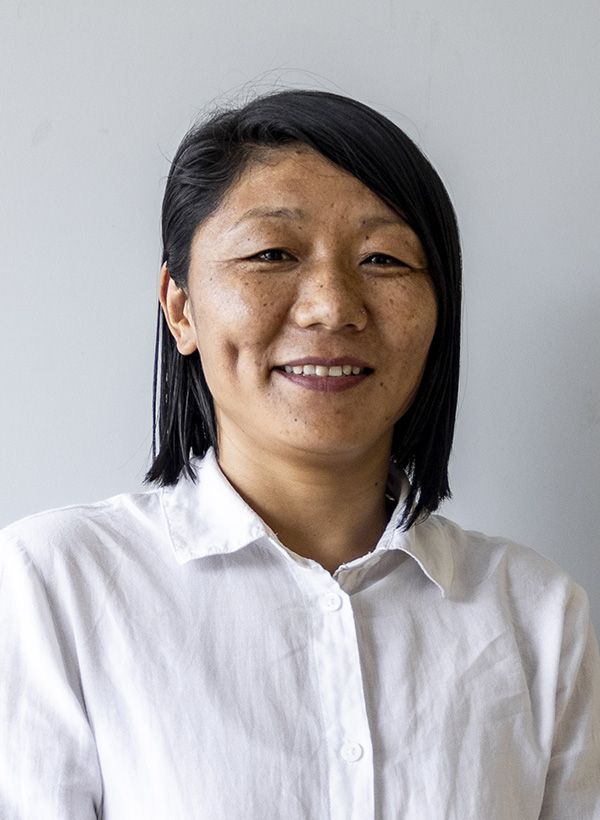
NIRMALA GURUNG 
+977 9801223978
nirmala@thamserku.com
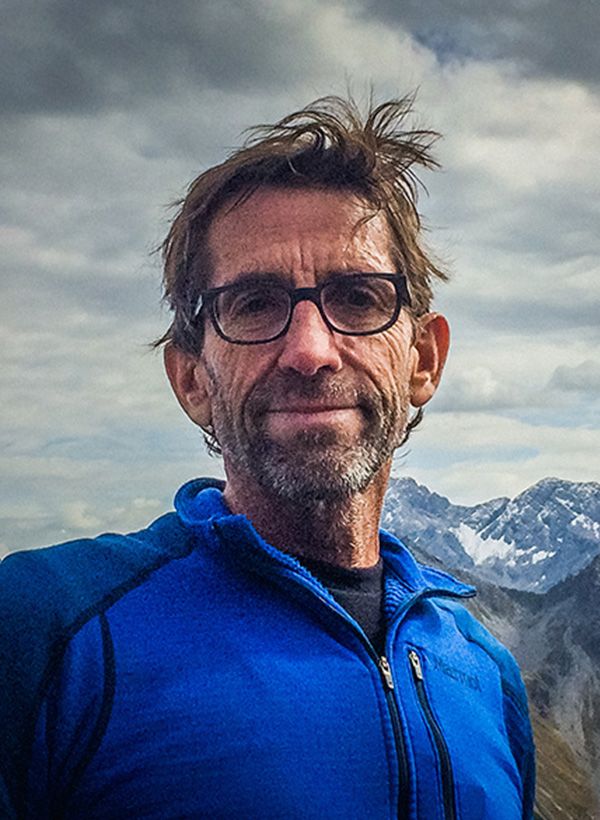
MICHAEL SCHOTT 


+49 174 9755492
m-schott@neumann-grafik.de
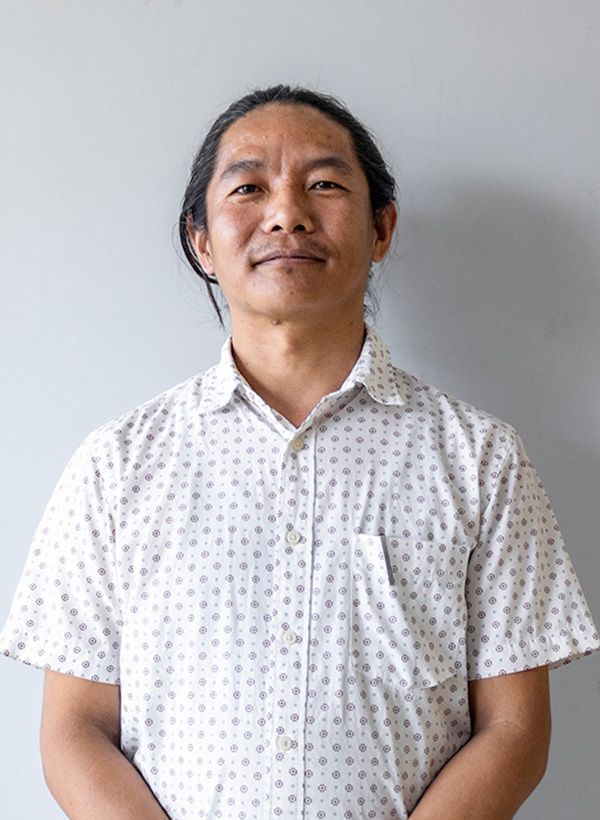
KUMAR RAI 
+977-9801236280
kumar@thamserkutrekking.com
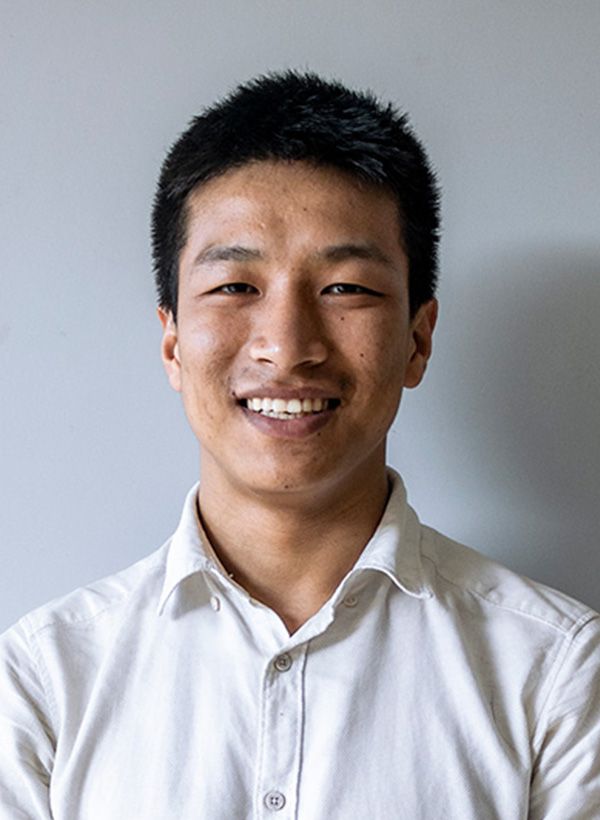
NIMTE SHERPA 
+977-9801223977
info@thamserkutrekking.com
BOOK YOUR TRIP BOOK YOUR TRIP BOOK YOUR TRIP BOOK YOUR TRIP BOOK YOUR TRIP BOOK YOUR TRIP BOOK YOUR TRIP BOOK YOUR TRIP BOOK YOUR TRIP BOOK YOUR TRIP BOOK YOUR TRIP BOOK YOUR TRIP BOOK YOUR TRIP BOOK YOUR TRIP BOOK YOUR TRIP BOOK YOUR TRIP BOOK YOUR TRIP BOOK YOUR TRIP BOOK YOUR TRIP BOOK YOUR TRIP BOOK YOUR TRIP BOOK YOUR TRIP BOOK YOUR TRIP BOOK YOUR TRIP BOOK YOUR TRIP BOOK YOUR TRIP BOOK YOUR TRIP BOOK YOUR TRIP BOOK YOUR TRIP BOOK YOUR TRIP BOOK YOUR TRIP BOOK YOUR TRIP BOOK YOUR TRIP BOOK YOUR TRIP BOOK YOUR TRIP BOOK YOUR TRIP BOOK YOUR TRIP BOOK YOUR TRIP BOOK YOUR TRIP BOOK YOUR TRIP BOOK YOUR TRIP BOOK YOUR TRIP
